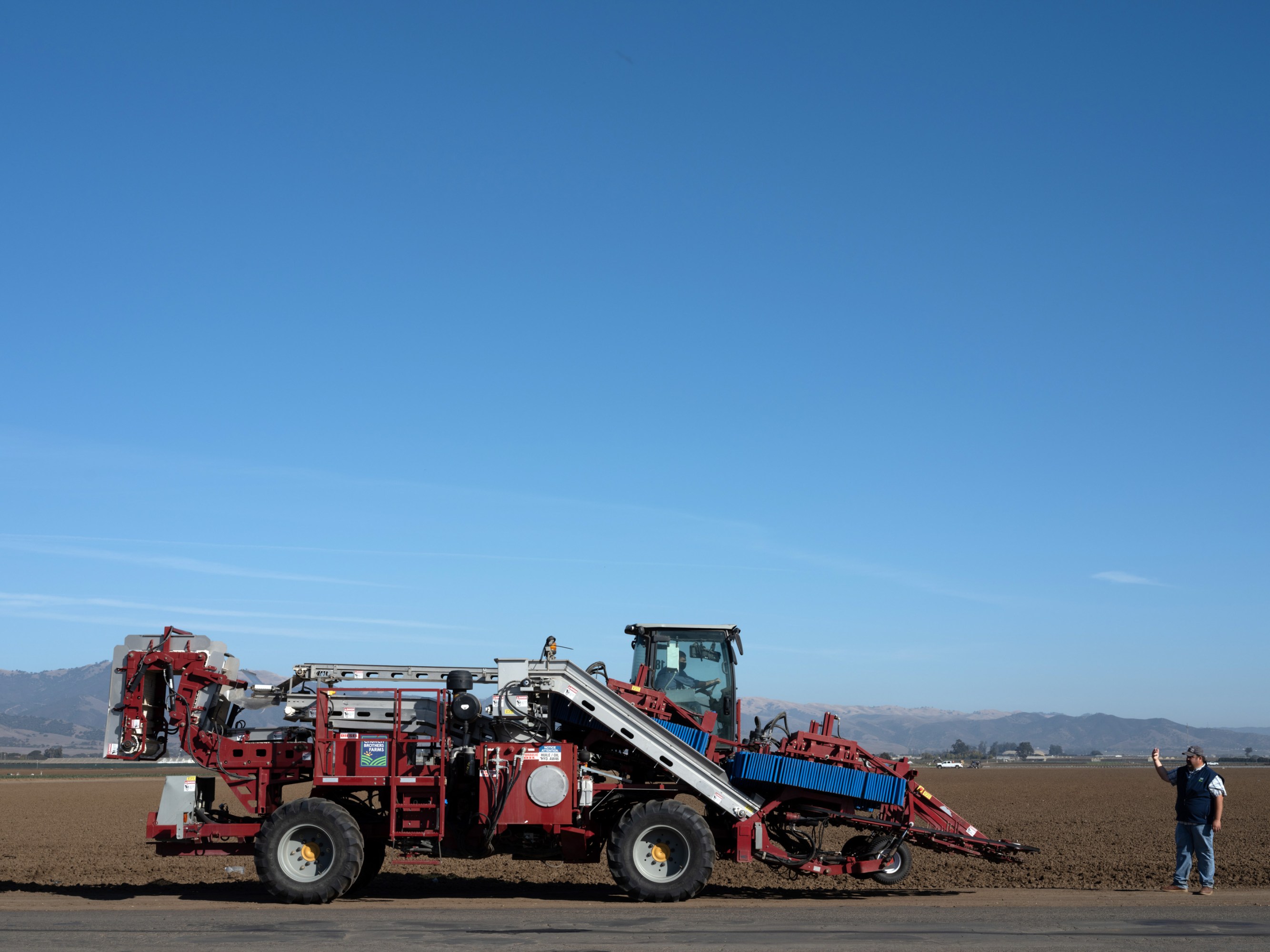One way to understand farming is as a never-ending hedge against the uncertainties that affect the bottom line: weather, disease, the optimal dose and timing of fertilizer, pesticides, and irrigation, and huge fluctuations in price. Each one of these factors drives thousands of incremental decisions over the course of a season–decisions based on long years of trial and error, intuition, and hard-won expertise. So the tech question on farmers’ lips everywhere, as Andy French told me, is: “What are you telling us that we didn’t already know?”
Josh Ruiz, the vice president of ag operations for Church Brothers, which grows greens for the food service industry, manages more than a thousand separate blocks of farmland covering more than 20,000 acres. Affable, heavy-set, and easy to talk to, Ruiz is known across the industry as an early adopter who’s not afraid to experiment with new technology. Over the last few years, he has become a regular stop on the circuit that brings curious tech executives in Teslas down from San Francisco and Mountain View to stand in a lettuce field and ask questions about the farming business. “Trimble, Bosch, Amazon, Microsoft, Google–you name it, they’re all calling me,” Ruiz says. “You can get my attention real fast if you solve a problem for me, but what happens nine times out of 10 is the tech companies come to me and they solve a problem that wasn’t a problem.”
What everyone wants, in a word, is foresight. For more than a generation, the federal government has sheltered growers of corn, wheat, soybeans, and other commodities from the financial impact of pests and bad weather by offering subsidies to offset the cost of crop insurance and, in times of bountiful harvests, setting an artificial “floor” price at which the government steps in as a buyer of last resort. Fruits and vegetables do not enjoy the same protection: they account for less than 1% of the $25 billion the federal government spends on farm subsidies. As a result, the vegetable market is subject to wild variations based on weather and other only vaguely predictable factors.


LUCAS FOGLIA
When I visited Salinas, in September, the lettuce industry was in the midst of a banner week price-wise, with whole heads of iceberg and romaine earning shippers as much as $30 a box, or roughly $30,000 an acre. “Right now, you have the chance to lose a fortune and make it back,” Ruiz said as we stood at the edge of a field. The swings can be dramatic: a few weeks earlier, he explained, iceberg was selling for a fraction of that amount–$5 a box, about half what it costs to produce and harvest.
In the next field over, rows of young iceberg lettuce seedlings were ribbed with streaks of tawny brown–the mark of the impatiens necrotic spot virus, or INSV, which has been wreaking havoc on Salinas lettuce since the mid-aughts. These were the early signs. Come back after a couple more weeks, Ruiz said, and half the plants will be dead: it won’t be worthwhile to harvest at all. As it was, that outcome would represent a $5,000 loss, based on the costs of land, plowing, planting, and inputs. If they decided to weed and harvest, that loss could easily double. Ruiz said he wouldn’t have known he was wasting $5,000 if he hadn’t decided to take me on a drive that day. Multiply that across more than 20,000 acres. Assuming a firm could reliably deliver that kind of advance knowledge about INSV, how much would it be worth to him?
One firm trying to find out is an imagery and analytics startup called GeoVisual Analytics, based in Colorado, which is working to refine algorithms that can project likely yields a few weeks ahead of time. It’s a hard thing to model well. A head of lettuce typically sees more than half its growth in the last three weeks before harvest; if it stays in the field just a couple of days longer, it could be too tough or spindly to sell. Any model the company builds has to account for factors like that and more. A ball of iceberg watered at the wrong time swells to a loose bouquet. Supermarket carrots are starved of water to make them longer.
When it comes to long-distance motorcycling, comfort, reliability, and smart engineering can make or break…
Flowers have seen significant transformation over time; online flower shopping is increasingly common now for…
Learn essential first-time landlord tips for success, from tenant screening to property maintenance. These strategies…
Every business will produce some form of waste. The real task isn’t preventing waste entirely—it’s…
Custom tailors can create unique garments that complement every inch of your body, and it’s…
Faulty wiring can ruin a perfect restoration. See how original-style harnesses preserve WWII Jeep reliability,…